At a coastal upwelling zone, wind blow parallel to a coast, water at the ocean surface moves away from the coast and deep water rises up to take its place.
Courtesy of NOAA
Ocean Upwelling
In areas of upwelling, deep ocean water makes its way to the surface. This has an impact on marine life as well as the region's climate.
Upwelling happens commonly along coastlines. Winds blowing parallel to a coastline cause water at the ocean surface to moves at about a 90 degrees angle from the wind direction (to the right of the wind direction in the Northern Hemisphere and to the left of the wind direction in the Southern Hemisphere) because of a process called Ekman transport. In places where surface waters are moved away from a coast by this process, water rises up from deeper in the ocean to take its place.
The water that is moved up to the surface is usually cold and rich in nutrients like nitrogen and phosphorus, which come from the decomposing bodies of dead sea creatures. Once at the surface, these extra nutrients are snatched up by phytoplankton, tiny photosynthesizing plants that float in the ocean water. Plankton populations often grow quickly in upwelling areas, a phenomenon called a plankton bloom. Tiny floating animals called zooplankton eat the phytoplankton and fish eat the zooplankton, making upwelling areas rich with marine life. About half the fish caught in the world comes from upwelling zones.
Upwelling also happens as a part of El Niño (ENSO) events in the Pacific Ocean off the coast of Ecuador and Peru and this has far-reaching effects on weather, changing precipitation patterns in many areas of the world.
Downwelling is the opposite of upwelling - surface waters pushing down into deeper areas of the ocean. This happens when winds cause Ekman transport to push water toward a coast and then deeper in the ocean.
Last modified September 18, 2008 by Lisa Gardiner.
You might also be interested in:

Wind is moving air. Warm air rises, and cool air comes in to take its place. This movement creates different pressures in the atmosphere which creates the winds around the globe. Since the Earth spins,
...more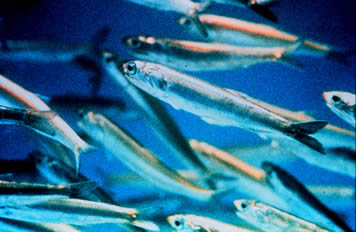
If you like anchovies on your pizza, there is a good chance that the little fish now swimming in tomato sauce was once swimming in the water of the Southeastern Pacific (SEP) Ocean. The deep, cold, and
...more
The water at the ocean surface is moved primarily by winds. Large scale winds move in specific directions because they are affected by Earth’s spin and the Coriolis Effect. Because Earth spins constantly,
...more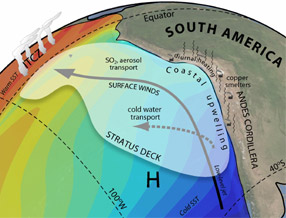
Winds in the Southeast Pacific have a strong influence on regional climate and play an important role in several large-scale, global climate phenomena. The Hadley cell is a global atmospheric circulation
...more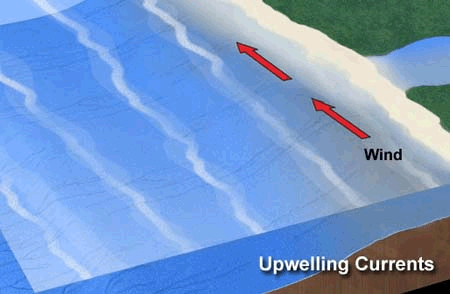
The ocean and the atmosphere in the Southeast Pacific Ocean are connected in many ways. Strong trade winds blow northward along the west coast of South America. These winds stir up the ocean, bringing
...more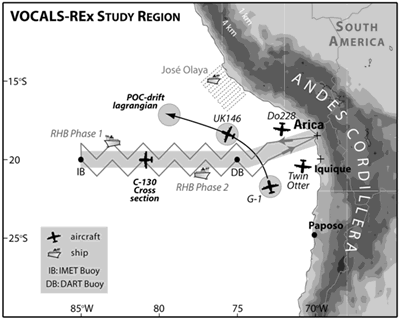
Long after the VOCALS campaign is completed, the scientists’ work will continue. They must process, review, and study the data to determine what has been learned. Many model runs will be made and analyzed.
...more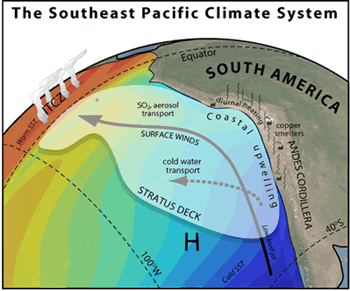
There are several regions in the world where low-lying stratus and stratocumulus clouds are frequently present and an important part of climates. It turns out that these regions also play an important
...more














